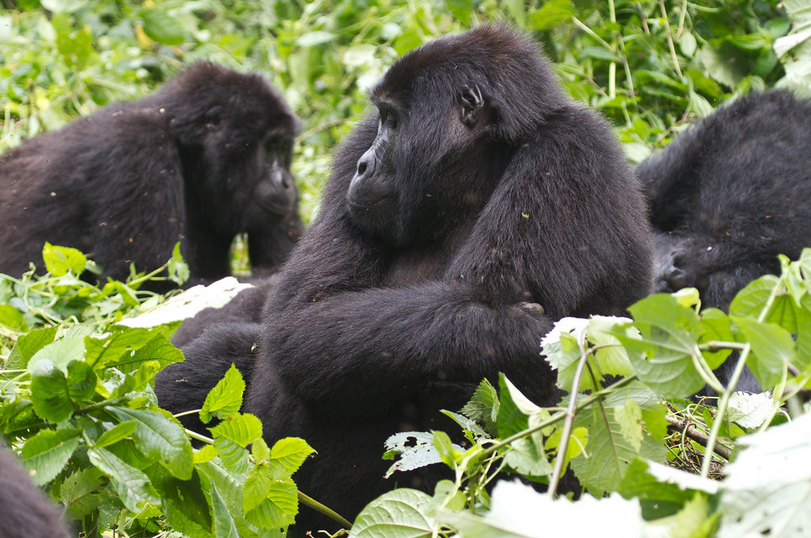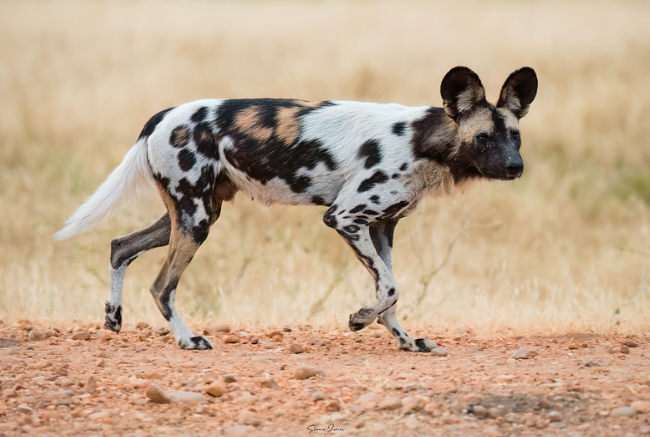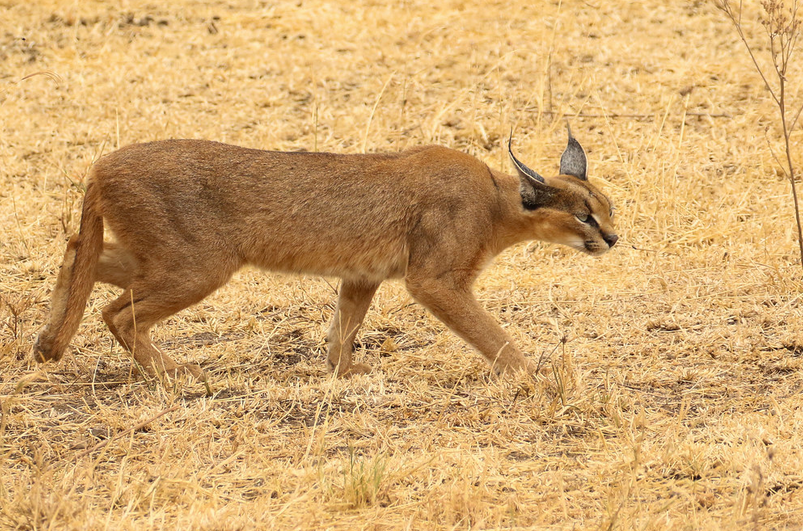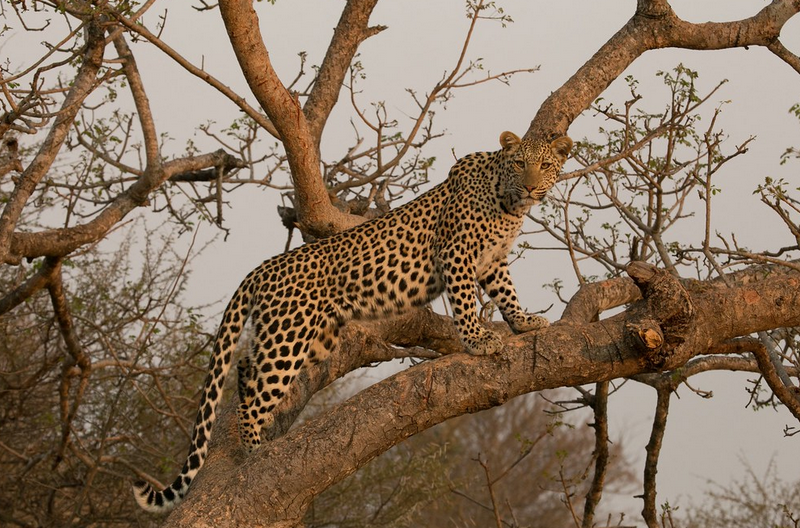Serengeti National Park
Park Overview:
Serengeti National Park: consists of grassland plains, savanna, riverine forest and woodlands and lies in northwestern Tanzania, bordered to the north by the Kenyan border, where it is continuous with the Maasai Mara National Reserve and became a national park in 1940. The Park is divided into 3 sections; The popular southern/central part (Seronera Valley), is what the Maasai called the “serengit”, the land of endless plains and its classic savannah, dotted with acacias and filled with wildlife. The western corridor is marked by the Grumeti River and has more forests and dense bush while the north, Lobo area, meets up with Kenya’s Masai Mara Reserve and the least visited section. The Mara River, which flows through Maasai Mara National Reserve from the Kenyan highlands to Lake Victoria, is the only permanently-flowing river in the Serengeti ecosystem. The park has over one million wildebeest thousands of zebras, more than 10 species of Antelopes and over 500 species of birds not forgetting two species of primates those are olive baboons and black faced monkeys and it’s the migration for which Serengeti is most famous.
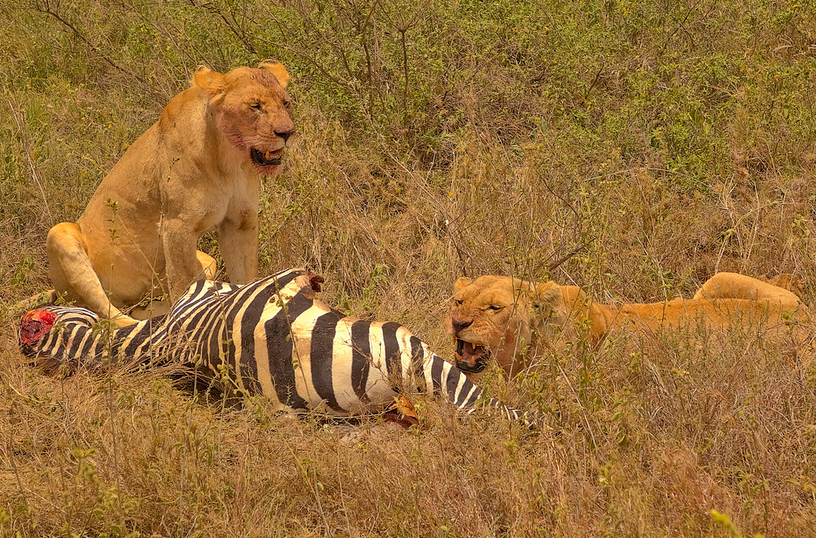
Serengeti National Park
What to do and see in Serengeti National Park
Attractions in Serengeti National Park
The wildebeest migration
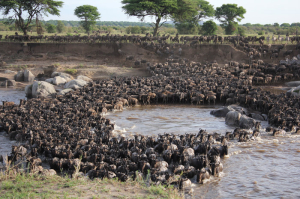
This activity is one of the 7 wonders of the world and one of the major attractions in Serengeti National Park. Over a million wildebeest and about 200,000 zebras flow south from the northern hills to the southern plains and it can only be a great experience in this park and may be its extension the Masai Mara National Park in Kenya. As these animals trek for miles in search of greener pastures, fresh water and there’s no better attraction than this. In April and May, the wildebeest can be seen in the western part of Serengeti National Park. Around August to September, the wildebeest cross to the Masai Mara National reserve via Mara River where some of the wildebeest don’t cross the river, crocodiles also feast on the wildebeest as well predators attack the wildebeest during migration.
Bird species
The park has over 500 bird species that call this place home. This park hosts species like lesser flamingos, secretary birds, red-billed buffalo weaver, sacred ibis, goliath herons, black herons, crowned cranes, shoebills, hamerkops, martial eagles, spur-winged geese, hadada hornbill, saddle-billed stork, blacksmith lapwing, masai ostrich, African fish eagles, oxpeckers, Egyptian geese, Tanzanian red-billed hornbill, pink-backed pelicans, spotted thick-knees, marabou storks, cattle egrets and African collared dove and many species of vultures.
Moru Kopjes
The Moru Kopjes around the Serengeti are a perfect place to catch the black rhinos. These protruding rocks around the park shade and disguise for the many animals and predators.
Wildlife
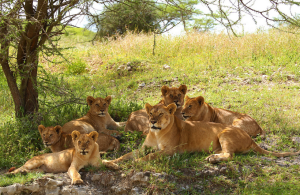
This park is well endowed by Mother Nature and its major attraction is wildlife. This park habits the highest concentration of large mammals in the world and chances you will most likely spot animals like lions, zebras, giraffes, wildebeests, hippos, elephants, cheetah, caracal, striped hyena, aardvark, serval, African wildcat, African striped weasel, bat-eared fox, seven species of mongooses, three species of hyraxes and two species of otters. Primates such as yellow and olive baboons, black-and-white colobus, vervet monkey and patas monkey. Reptiles include; tortoise, rainbow agama, Nile crocodile, chameleon, black-necked spitting cobra, Nile monitor, black mamba, puff adder and African python.
Grumeti River
This is a popular attraction especially during the wildebeest migration, the site is spectacular as millions of beasts try to cross the river to masai mara and the river is infected by many crocodiles and it is survival for the fittest as animals try to make it across.
Olduvai Gorge
This is another attraction that is significant and is located in this park. This is where the oldest remains of the early man were dug from about a million years ago by Dr. Louis leaky the famous E. African archaeologist and this discovery change the understanding of the evolution of man.
Masai mara people
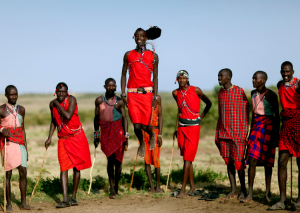
This park is also a home of the maasai mara people whose tribe and traditional practices have barely been touched just like the park itself. These people still carry out their rituals and practices which makes them an exciting and authentic attraction. The maasai have unique homesteads known as “manyattas” made using local materials such as dung. When you visit the maasai villages, you get to see these homesteads and know more about the culture and traditions of the maasai.
Seronera River Valley
This provides postcard perfect views of the Serengeti and the whole region, surrounding the river, is overflowing with unique flora and fauna. This valley is a summary of the entire Serengeti-there are rivers, gorges, mountains and the animals.
Activities
Different activities can be enjoyed in this park like;
Cultural experience
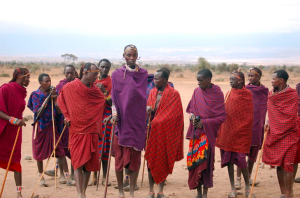
This is an interesting activity in Serengeti with an interesting culture and norms across Africa. The Maasai is the cultural group in which modernization has failed to change though they live in towns and cities. They are a very unique in that they are the only group of people who have managed to leave together with wildlife with little complain or effects on either side. They have their traditional belief in their small good which is called Engai or Enkai and they stick on their traditional way of life. They put on the red-colored maasai dress that is used at day time as cloth and at night its turned as a bed sheet. Dressing code depends on the age of the person from black for the young ones to red or blue for the elder people.
Bird watching
There are over 500 bird species in this national park and they include; grey crowned cranes, yellow billed storks, lesser flamingos black herons, crowned cranes, shoebills, hamerkops, martial eagles, spur-winged geese, hadada hornbill, saddle-billed stork, blacksmith lapwing, masai ostrich, African fish eagles, oxpeckers, Egyptian geese and Tanzanian red-billed hornbill.
Hot air balloon rides
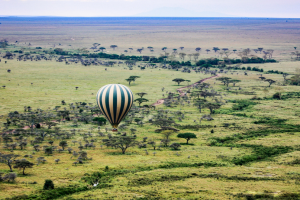
This is a unique way to enjoy seeking the different attractions around Serengeti National Park. This activity can be carried out in the morning after being briefed before proceeding to engage in this activity. You will enjoy seeing the different wildlife species such as rhinos, elephants, lions, giraffes among others. This activity starts early in the morning at around 5am as float on air as you observe wildlife takes between 1hr to 4hrs and concluded with bush breakfast. This activity is conducted in 4 sectors, central seronera part, the northern Serengeti maasai circuit and finally the southern Ndutu sector.
Game drives
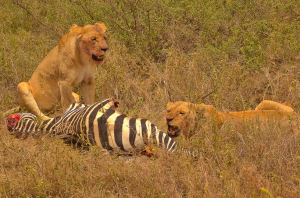
In this park game drives can be carried out in the morning, afternoon, evening or for a full day. This activity is popular among tourists and visitors to this park as they enjoy driving around the endless savannah plains in search of the different wildlife species such as lions, zebras, giraffes, wildebeests, hippos, elephants, cheetah, caracal, striped hyena, aardvark, serval, African wildcat, African striped weasel, bat-eared fox.
Park entry fees
Tanzania National Park Authority (TNPA) is in charge of collecting all the park entry fees and fees vary for 24hours if one stays inside the park and valid for the time one is inside and park but as soon as you check out of the gate the park entry fees are invalid hence on return you pay for more. If one is staying outside the park you pay entry fees every time you want to enter the park.
- Foreigners above 16 years of age $60 per person
- Foreign residents and expatriates above 16 years of age $30
- East African citizen 10000+sh
- Children between 5-15 years 20usd (non E. Africans)
- Foreign children residents 5-15 years 10usd
- Children below age of 5 years – free
- Cost excludes 18%
How to get to Serengeti National Park
Serengeti National Park is found on the Northern part of Tanzania 7 hours’ drive away from Tourist town Arusha along the well Tarmac good road that runs crossing different towns like Karatu and others. The drivers also passes through the Great Rift Valley in Lake Manyara National Park popularly known for the tree climbing lions and baboons. After reaching the Karatu you will enter to the Ngorongoro crater where you get your clearance as you pay transit fees to pass through this unique beautiful park. View of the crater with your good camera and binoculars you see animals down the crater which rises to 600 meters deep.
Best time to visit
The best time to visit this park is in late June-October or during the dry season vary. During June-July, it’s the best time to view the great wildebeest migration. April and May are the rainy season months registering the highest rainfall and may lodges and camps close for this slower season.
Accommodation in Serengeti National Park
This park has got different kinds of accommodation ranging from luxury, midrange and budget accommodation.
Luxury
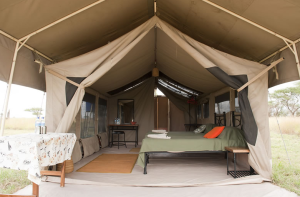
- Roving Bushtop camp
- Singita mara camp
- Four seasons safari lodge
- Lemala Nanyukie Tented lodge
Midrange
- Serengeti serena lodge
- Kubu kubu Tented lodge
- Melia Serengeti lodge
Budget
- Grumeti migration camp
- Serengeti simba
- Lobo wildlife lodge
Below are some of our tours to different destinations in the Country
1 Day Chimpanzee Ngamba Island Tour
1 Day Source of the Nile Jinja
2 Days Murchison falls national park
3 Days Lake Mburo national park safari
3 Days Murchison falls national park
3 Days Queen Elizabeth national park
4 Days Kidepo savannah wildlife safari
5 Days Queen & Bwindi Adventure safari
6 Days Uganda wildlife & primate safari
7 Days Uganda Adventure Safari
8 Days Gorilla & Wildlife safari
10 Days Gorilla & Adventure safari
14 Days Explore Uganda Adventure Safari
Request a Quote
Featured Tour Updates
Permit cost for gorilla trekking in Uganda
Permit cost for gorilla trekking in Uganda Permit cost for gorilla trekking in Uganda : Gorilla trekking is one...
The African Wild Dog
The African Wild Dog The African wild dog: (Lycaon pictus) also known as the African painted dog or Cape...
The Caracal (Felis caracal)
The Caracal (Felis caracal) The Caracal (Felis caracal): is a medium-sized wild cat that can run up to 50...
African Leopards (Panthera pardus)
African Leopards (Panthera pardus) African Leopards (Panthera pardus) : are one of the most feared but respected animals in...

Serengeti National Park
The park covers 14,750 km2 (5,700 sq mi) of grassland plains, savanna, riverine forest and woodlands. The park lies in northwestern Tanzania, bordered to the north by the Kenyan border, where it is continuous with the Maasai Mara National Reserve and the area became a national park in 1940. The Park is divided into 3 sections; The popular southern/central part (Seronera Valley), is what the Maasai called the “serengit”, the land of endless plains and its classic savannah, dotted with acacias and filled with wildlife. The western corridor is marked by the Grumeti River, and has more forests and dense bush. The north, Lobo area, meets up with Kenya’s Masai Mara Reserve, is the least visited section. The Mara River, which flows through Maasai Mara National Reserve from the Kenyan highlands to Lake Victoria, is the only permanently-flowing river in the Serengeti ecosystem. The park has over one million wildebeest thousands of zebras, more than 10 species of Antelopes and over 500 species of birds not forgetting two species of primates those are olive baboons and black faced monkeys and it’s the migration for which Serengeti is most famous. Over a million wildebeest and about 200,000 zebras flow south from the northern hills to the southern plains for the short rains every October and November and then swirl west and north after the long rains in April, May and June. The wildebeest travel through a variety of parks, reserves and protected areas and through a variety of habitant.
Location
Serengeti National Park is found on the Northern part of Tanzania 7 hours’ drive away from Tourist town Arusha along the well Tarmac good road that runs crossing different towns like Karatu and others. The drivers also passes through the Great Rift Valley in L. Manyara national park popularly known for the tree climbing lions and baboons. After reaching the Karatu we will enter to the Ngorongoro crater where we get our clearance as we pay transit fees to pass through this unique beautiful park. View of the crater with your good camera and binoculars you see animals down the crater which rises to 600 meters deep.
Attractions in Serengeti National Park
This park is endowed with multiplicities of what to see and what to do include;
The wildebeest migration
This activity is one of the 7 wonders of the world and one of the major attractions in Serengeti National Park. Over a million wildebeest and about 200,000 zebras flow south from the northern hills to the southern plains and it can only be a great experience in this park and may be its extension the Masai Mara National Park in Kenya. As these animals trek for miles in search of greener pastures, fresh water and there’s no better attraction than this. In April and May, the wildebeest can be seen in the western part of Serengeti National Park. Around August to September, the wildebeest cross to the Masai Mara National reserve via Mara River where some of the wildebeest don’t cross the river, crocodiles also feast on the wildebeest as well predators attack the wildebeest during migration.
Wildlife
This park is well endowed by Mother Nature and its major attraction is wildlife. This park habits the highest concentration of large mammals in the world and chances you will most likely spot animals like lions, zebras, giraffes, wildebeests, hippos, elephants, cheetah, caracal, striped hyena, aardvark, serval, African wildcat, African striped weasel, bat-eared fox, seven species of mongooses, three species of hyraxes and two species of otters. Primates such as yellow and olive baboons, black-and-white colobus, vervet monkey and patas monkey. Reptiles include; tortoise, rainbow agama, Nile crocodile, chameleon, black-necked spitting cobra, Nile monitor, black mamba, puff adder and African python.
Masai mara people
This park is also a home of the maasai mara people whose tribe and traditional practices have barely been touched just like the park itself. These people still carry out their rituals and practices which makes them an exciting and authentic attraction. The maasai have unique homesteads known as “manyattas” made using local materials such as dung. When you visit the maasai villages, you get to see these homesteads and know more about the culture and traditions of the maasai.
Bird species
The park has over 500 bird species that call this place home. This park hosts species like lesser flamingos, secretary birds, red-billed buffalo weaver, sacred ibis, goliath herons, black herons, crowned cranes, shoebills, hamerkops, martial eagles, spur-winged geese, hadada hornbill, saddle-billed stork, blacksmith lapwing, masai ostrich, African fish eagles, oxpeckers, Egyptian geese, Tanzanian red-billed hornbill, pink-backed pelicans, spotted thick-knees, marabou storks, cattle egrets and African collared dove and many species of vultures.
Moru Kopjes
The Moru Kopjes around the Serengeti are a perfect place to catch the black rhinos. These protruding rocks around the park shade and disguise for the many animals and predators.
Grumeti River
This is a popular attraction especially during the wildebeest migration, the site is spectacular as millions of beasts try to cross the river to masai mara and the river is infected by many crocodiles and it is survival for the fittest as animals try to make it across.
Olduvai Gorge
This is another attraction that is significant and is located in this park. This is where the oldest remains of the early man were dug from about a million years ago by Dr. Louis leaky the famous E. African archaeologist and this discovery change the understanding of the evolution of man.
Seronera River Valley
This provides postcard perfect views of the Serengeti and the whole region, surrounding the river, is overflowing with unique flora and fauna. This valley is a summary of the entire Serengeti-there are rivers, gorges, mountains and the animals.
Activities in Serengeti National Park
Different activities can be enjoyed in this park like;
Cultural experience
This is an interesting activity in Serengeti with an interesting culture and norms across Africa. The Maasai is the cultural group in which modernization has failed to change though they live in towns and cities. They are a very unique in that they are the only group of people who have managed to leave together with wildlife with little complain or effects on either side. They have their traditional belief in their small good which is called Engai or Enkai and they stick on their traditional way of life. They put on the red-colored maasai dress that is used at day time as cloth and at night its turned as a bed sheet. Dressing code depends on the age of the person from black for the young ones to red or blue for the elder people.
Hot air balloon rides
This is a unique way to enjoy seeking the different attractions around Serengeti National Park. This activity can be carried out in the morning after being briefed before proceeding to engage in this activity. You will enjoy seeing the different wildlife species such as rhinos, elephants, lions, giraffes among others. This activity starts early in the morning at around 5am as float on air as you observe wildlife takes between 1hr to 4hrs and concluded with bush breakfast. This activity is conducted in 4 sectors, central seronera part, the northern Serengeti maasai circuit and finally the southern Ndutu sector.
Game drives
In this park game drives can be carried out in the morning, afternoon, evening or for a full day. This activity is popular among tourists and visitors to this park as they enjoy driving around the endless savannah plains in search of the different wildlife species such as lions, zebras, giraffes, wildebeests, hippos, elephants, cheetah, caracal, striped hyena, aardvark, serval, African wildcat, African striped weasel, bat-eared fox.
Bird watching
There are over 500 bird species in this national park and they include; grey crowned cranes, yellow billed storks, lesser flamingos black herons, crowned cranes, shoebills, hamerkops, martial eagles, spur-winged geese, hadada hornbill, saddle-billed stork, blacksmith lapwing, masai ostrich, African fish eagles, oxpeckers, Egyptian geese and Tanzanian red-billed hornbill.
Best time to visit
The best time to visit this park is in late June-October or during the dry season vary. During June-July, it’s the best time to view the great wildebeest migration. April and May are the rainy season months registering the highest rainfall and may lodges and camps close for this slower season.
Park entry fees
Tanzania National Park Authority (TNPA) is in charge of collecting all the park entry fees and fees vary for 24hours if one stays inside the park and valid for the time one is inside and park but as soon as you check out of the gate the park entry fees are invalid hence on return you pay for more. If one is staying outside the park you pay entry fees every time you want to enter the park.
- Foreigners above 16 years of age $60 per person
- Foreign residents and expatriates above 16 years of age $30
- East African citizen 10000+sh
- Children between 5-15 years 20usd (non E. Africans)
- Foreign children residents 5-15 years 10usd
- Children below age of 5 years – free
- Cost excludes 18%
Accommodation in Serengeti National Park
This park has got different kinds of accommodation ranging from luxury, midrange and budget accommodation.
Luxury
- Roving Bushtop camp
- Singita mara camp
- Four seasons safari lodge
- Lemala Nanyukie Tented lodge
Midrange
- Serengeti serena lodge
- Kubu kubu Tented lodge
- Melia Serengeti lodge
Budget
- Grumeti migration camp
- Serengeti simba
- Lobo wildlife lodge

